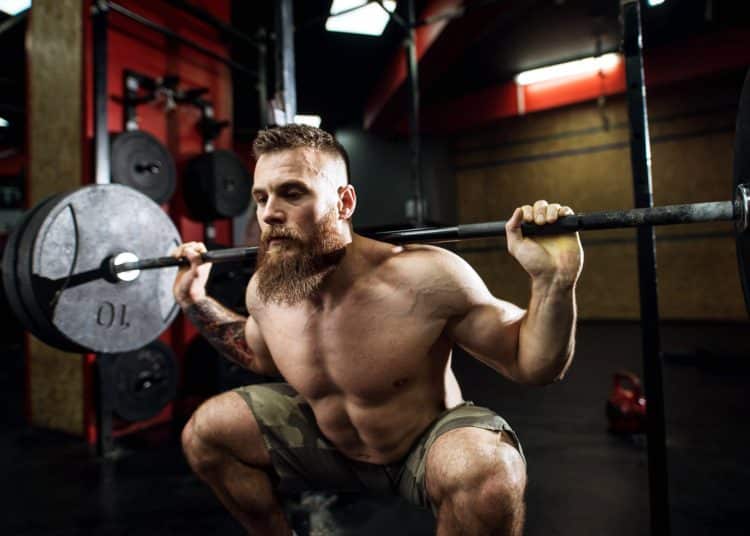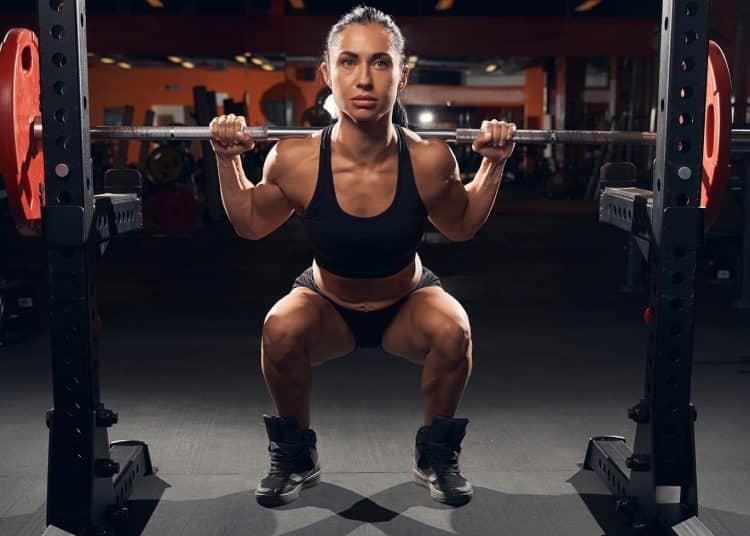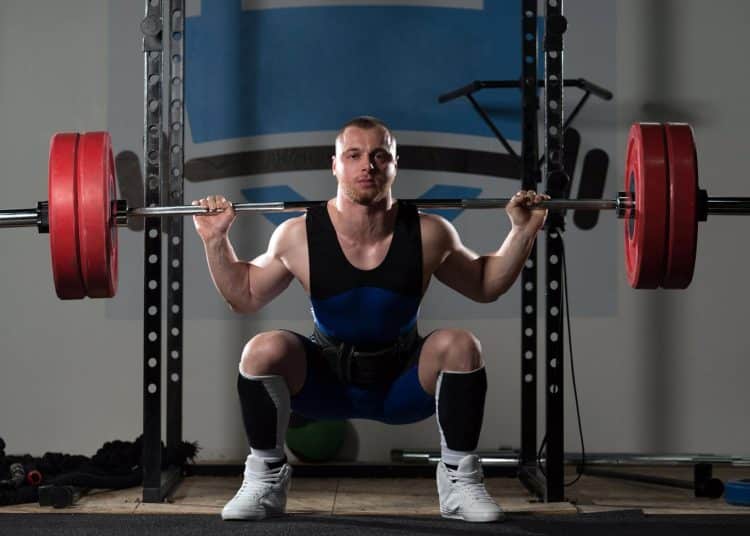The squat is a compound exercise that is one of the three big lifts in the powerlifting circuit, besides the bench press and deadlift. It is arguably the best lower body-building exercise and is the go-to for lifters looking to build strength and muscle mass.
However, most lifters will tell you they have a love-hate relationship with the squat. They either love to hate it or hate to love it. Whichever it might be, they cannot skip it.
Since the squat is a multi-joint movement comprising several moving parts, it has a steep learning curve. Nevertheless, many novice lifters are hell-bent on lifting heavier on the exercise so they can boast a big number when confronted with a “how much do ya squat?”
Plus, many exercisers try to outdo their lifting partners or the strongest lifter at their gym by trying to go heavier. Strength insecurities are a reality. Don’t believe us? A visit to your local gym during the rush hours should change that.
Unless you’re a competitive powerlifter, weightlifter, or strongman, you shouldn’t worry about lifting heavier than your peers. Recreational bodybuilding is an individual sport; competing against others, especially without the right knowledge and technique can be disastrous.
We thought long and hard about how a lifter could overcome their strength insecurities before finally coming to a conclusion. If an individual knows about the average squat for their weight, gender, and experience level, they might stop punching above their weight.
In this article, you’ll learn about the average squat by gender, weight, and experience level, how to perform the squat with the correct form, and get better at the lift.
[sc name=”style-blue-box” ]
Trivia: Ray Williams holds the world record for the heaviest raw squat with an earth-shattering 490-kilogram (1,080-pound) lift set at the 2019 USAPL Arnold SBD Pro American.
[/sc]
Average Squat By Weight, Experience Level, and Gender
The weight you’ll be able to squat will change depending on your body weight, sex, and experience level. The tables below will help you find how you stack up against lifters at your level.
The numbers listed against your weight and experience levels represent your one-rep max (1RM). Lifters shouldn’t attempt the squat with the weights mentioned in the table without prior practice and warming up. Furthermore, a spotter should assist you through the exercise.
Average Squat Weight For Male

The average male squat depends on several factors, including a lifter’s age, weight, and experience level.
Below is the Male Squat Standards chart from Symmetric Strength:
[sc name=”TableNoWrap”]
| Body Weight (pounds) | Untrained | Novice | Intermediate | Proficient | Advanced | Exceptional | Elite | World Class |
| 114 | 95 | 140 | 185 | 230 | 270 | 310 | 345 | 385 |
| 123 | 100 | 150 | 200 | 250 | 290 | 335 | 375 | 415 |
| 132 | 105 | 160 | 215 | 265 | 310 | 355 | 400 | 445 |
| 148 | 120 | 175 | 235 | 295 | 345 | 395 | 440 | 490 |
| 165 | 130 | 190 | 255 | 320 | 375 | 425 | 480 | 535 |
| 181 | 135 | 205 | 270 | 340 | 395 | 455 | 510 | 565 |
| 198 | 145 | 215 | 285 | 355 | 415 | 475 | 535 | 595 |
| 220 | 150 | 225 | 300 | 375 | 435 | 500 | 560 | 625 |
| 242 | 155 | 235 | 310 | 390 | 450 | 515 | 580 | 645 |
| 275 | 160 | 240 | 320 | 400 | 465 | 535 | 600 | 670 |
| 320 | 165 | 245 | 330 | 410 | 480 | 550 | 615 | 685 |
[/sc]
[sc name=”style-blue-box2″ ]
Per the data, world-class athletes can lift four times as heavy as individuals who do not train. At the same time, advanced lifters can squat almost twice as much as a beginner.
[/sc]
Average Squat Weight For Female

Like their male counterparts, the average squat for women depends on factors like age, weight, and experience level.
Below is the Female Squat Standards chart from Symmetric Strength:
[sc name=”TableNoWrap”]
| Body Weight (pounds) | Untrained | Novice | Intermediate | Proficient | Advanced | Exceptional | Elite | World Class |
| 97 | 65 | 100 | 130 | 165 | 190 | 220 | 245 | 275 |
| 105 | 70 | 105 | 140 | 175 | 200 | 230 | 260 | 290 |
| 114 | 75 | 110 | 145 | 185 | 215 | 245 | 275 | 305 |
| 123 | 80 | 115 | 155 | 195 | 230 | 260 | 295 | 325 |
| 132 | 85 | 125 | 165 | 205 | 240 | 275 | 310 | 345 |
| 148 | 90 | 135 | 180 | 225 | 260 | 300 | 335 | 375 |
| 165 | 95 | 145 | 195 | 240 | 285 | 325 | 365 | 405 |
| 181 | 100 | 155 | 205 | 255 | 300 | 340 | 385 | 425 |
| 198 | 105 | 160 | 215 | 265 | 310 | 355 | 400 | 445 |
| 200 | 105 | 160 | 215 | 270 | 310 | 355 | 400 | 445 |
[/sc]
[sc name=”style-blue-box2″ ]
The above data reveals that world-class female athletes can lift four times as heavy as untrained individuals, and advanced lifters can squat almost twice as much as a beginner, which is in line with the male performance on the compound lift.
[/sc]
Overall Average Male and Female Squat
Here is what the overall average squat weight for males and females looks like:
Overall Average Male Squat
Per the Centers for Disease Control and Prevention’s National Center for Health Statistics (CDC), an average American male weighs 197.8 pounds, meaning the average squat of a man who doesn’t lift is 145 pounds or 215 pounds for a rookie lifter. [1]
The average squat jumps to 285 pounds for intermediate, 355 pounds for proficient, 415 pounds for advanced, 475 pounds for exceptional, 535 pounds for elite, and 595 pounds for world-class athletes.

Overall Average Female Squat
Per the CDC data, an average American female tips the scales at 170.5 pounds. As per the table from Symmetric Strength, a 165-pound woman (closest to 170.5 pounds) with no lifting experience can squat 95 pounds or 145 for a novice.
Furthermore, the average squat rises to 195 pounds for an intermediate lifter, 240 pounds for proficient, 285 pounds for advanced, 325 pounds for exceptional, 365 pounds for elite, and 405 pounds for world-class athletes.
How to Squat
Performing the lift with the correct form can help you squeeze the most out of the exercise. Plus, it can help you avoid injuries. This is how to squat like a pro:
- Set the barbell to just below shoulder height and load an appropriate weight on the bar.
- Stand under the bar with your feet about shoulder-width apart.
- Position the bar so that it is resting on your traps, not on the back of your neck.
- Grab the bar with a wide grip for stability.
- Bend at your knees and straighten your back in preparation to take the weight off the rack.
- Keeping your torso upright, push through the legs to take the weight off the rack.
- Take a small step back and stabilize yourself.
- Keeping your eyes pinned ahead, slowly lower your body as low as possible by pushing your hips back and down. Make sure you don’t bend forward on the way down.
- Squat down until your thighs are at least parallel to the floor.
- Return to the starting position explosively by pushing through your heels.
- Without locking out your knees, pause and contract your quads at the top.
- Repeat for recommended reps.
Check out our barbell squat guide to learn how to perform the exercise for achieving muscle hypertrophy.
How to Improve Your Squat
Use the following methods to make the most of the exercise:
1. Practise Mobility Exercises
Most people overlook the importance of flexibility and mobility in resistance training. Stiff muscles can negatively impact your performance. The squat is a multi-joint exercise that works almost every muscle in your body.
Before you head into the squat, you should spend at least 10-15 minutes performing a stretching routine, focusing on working your back, lower body, and shoulder rotator cuffs.
2. Breathe Right
The right breathing technique can make a world of difference during resistance training. There are two popular breathing techniques that most pro-lifters use while performing the squat.
The first method involves taking a deep breath, holding it as you reach the bottom of the movement, and exhaling on the way up. The other technique includes breathing on the way down and exhaling sharply on the way up.
3. Push Through The Heels
While at the bottom of the squat, focus on pushing through your heels, not the balls of your feet. Plus, instead of trying to stand up, you should try to push the floor away from you. This technique might sound silly but will drastically improve your squat.
4. Progressive Overloading
Gradually increasing the weight, frequency, or number of repetitions in your strength training routine is a reliable way of improving your squat.
Furthermore, using accessories like a weightlifting belt, knee wraps, and wrist wraps can improve your performance while reducing the chances of injury.
5. Incorporate Advanced Training Principles Into Training
Including advanced training techniques like supersets, dropsets, intraset stretching, negatives, and forced reps can help build strength and avoid hitting a plateau.
6. Focus on Recovery
To grow bigger and stronger, you need to ensure you are allowing your body enough time to rest and recuperate after your workouts.
Legs are the biggest muscle group in your body and need more time to recover between training days compared to smaller muscle groups like biceps and shoulders. Most pro bodybuilders do not train their legs more than twice a week.
Check Out: 8 Ways to Speed Up Recovery After Training
FAQs
Is it hard to squat your body weight on the barbell back squat?
Per the data from Symmetric Strength, for male novice lifters up to the body weight of 220 pounds, squatting their body weight, with adequate practice, for a one-rep max shouldn’t be a problem. However, only intermediate male lifters can squat the equivalent of their body weight in the 242 to 320 weight category.
On the other hand, beginner women lifters up to 105 pounds can squat their body weight on the barbell back squat. For women between 114 to 200 pounds, they’ll have to be intermediate lifters to achieve the feat.
What is a good squat for a male?
It depends on how you define ‘good’. As per the CDC data, a skilled lifter at 197.8-pound bodyweight, on average, can squat 355 pounds.
You might also like:
- Average Bench Press By Age, Weight, Gender, and Experience Level
- Average Deadlift By Weight, Gender, and Experience Level
- Average Pull-Up and Chin-Up By Weight, Gender, and Experience Level
- Average Power Clean By Weight, Gender, and Experience Level
- Average Thigh Circumference in Males and Females
- The Average Calf Size for Men and Women
- Average Waist Size For Women and Men
- Average Biceps Size: How Do You Measure Up?
Wrapping Up
Use the tables above not to chase bigger weights but to compare your squat against the strength standards of your weight and experience level.
Spend time improving your form and skills and gaining confidence before moving to bigger weights. Do not bite off more than you can chew. Remember, strength gains on the squat are always linear and not exponential. They might take some time but will be worth it.
References
- McDowell MA, Fryar CD, Ogden CL, Flegal KM. Anthropometric reference data for children and adults: United States, 2003–2006. National health statistics reports; no 10. Hyattsville, MD: National Center for Health Statistics. 2008.


